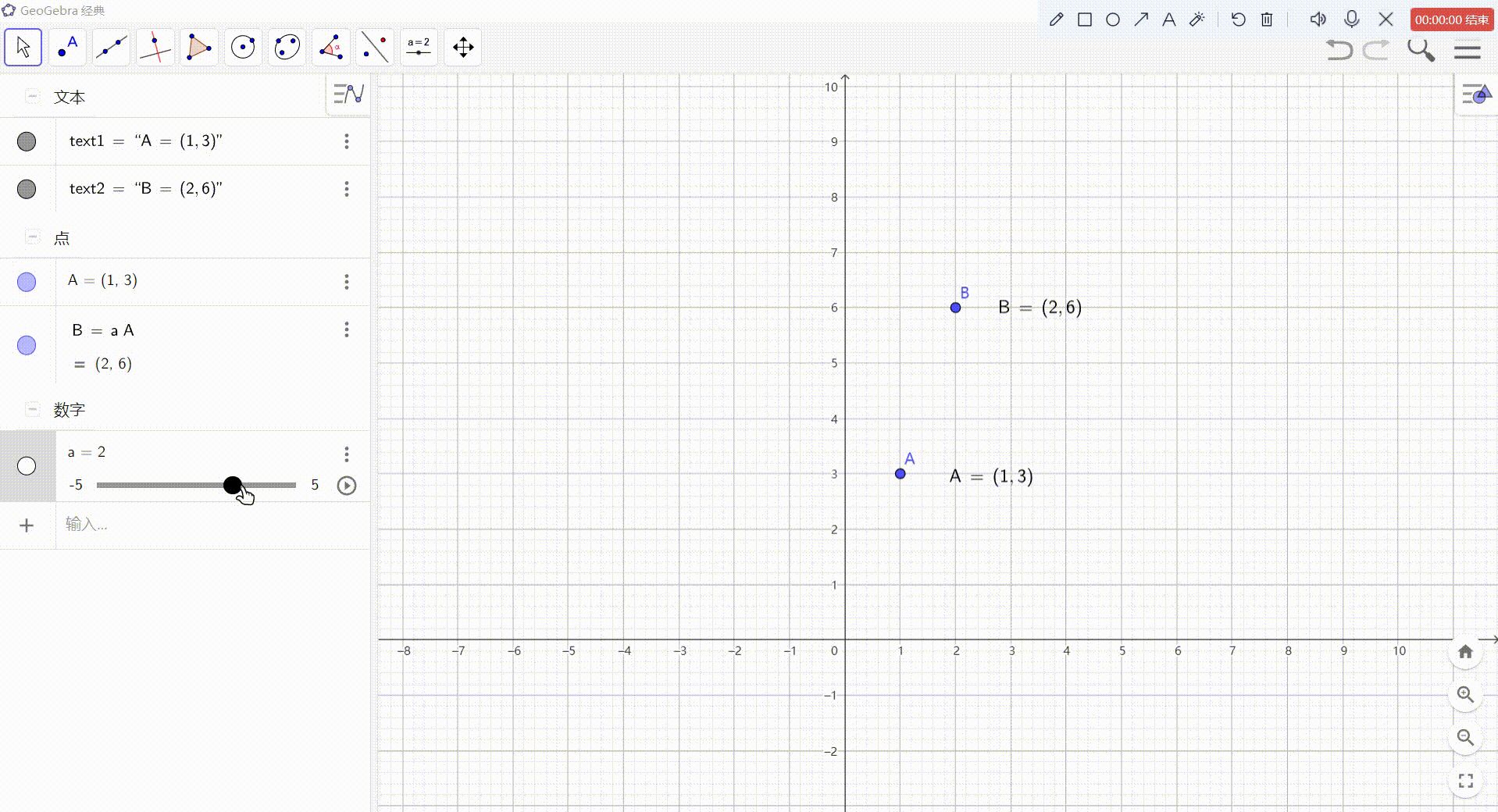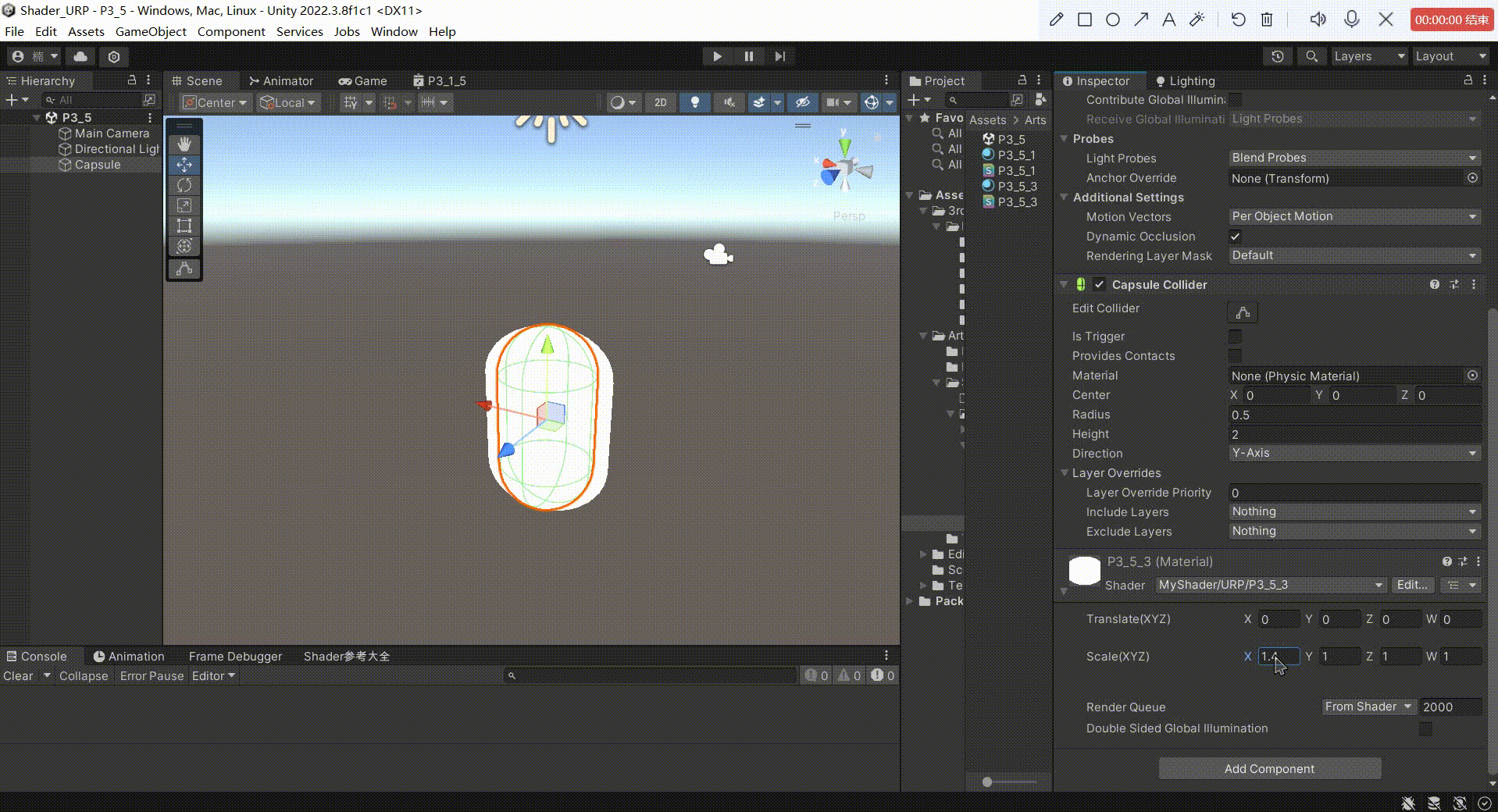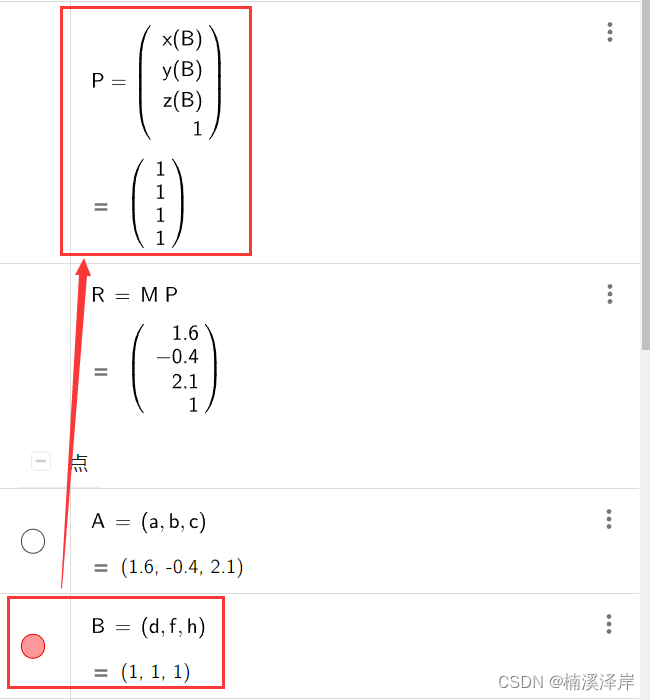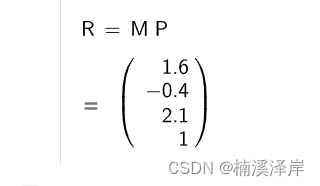Unity中Shader缩放矩阵
发布时间:2023年12月21日
前言
在Shader中,我们对于顶点经常使用到缩放变换。我们在这篇文章中,用点的缩放看一下缩放变换的缩放矩阵。
一、直接相乘缩放
P1 = P*S
P1 = (Px * Sx,Py * Sy,Pz * Sz)

1、在属性面板定义一个四维变量,用xyz分别控制在xyz轴上的缩放
_Scale(“Scale(XYZ)”,Vector)= (1,1,1,1)
2、在常量缓存区申明该变量
CBUFFER_START(UnityPerMaterial)
float4 _Scale;
CBUFFER_END
3、在顶点着色器对其进行相乘,来缩放变换
v.vertexOS *= _Scale;
4、我们来看看效果

二、使用矩阵乘法代替直接相乘缩放的原理
1、我们按如下格式得到缩放矩阵
扩维到四维的原因:因为平移矩阵是4维的,使缩放矩阵变成同一维度,在之后可以合并变换矩阵
- Scale(a,b,c)

2、把我们需要平移的点变为列矩阵
- P(x,y,z)

3、Mscale* P 得到缩放变换后的结果

4、我们在图形计算器中看看效果

三、在URP Shader中实现
1、在属性面板定义一个四维变量,用xyz分别控制在xyz轴上的缩放
_Scale(“Scale(XYZ)”,Vector)= (1,1,1,1)
2、在常量缓存区申明该变量
CBUFFER_START(UnityPerMaterial)
float4 _Scale;
CBUFFER_END
3、在顶点着色器中得到缩放矩阵
float4x4 M_Scale = float4x4
(
_Scale.x,0,0,0,
0,_Scale.y,0,0,
0,0,_Scale.z,0,
0,0,0,1
);
4、因为Attribute接收顶点格式为(x,y,z,1)且mul相乘规则的原因。所以,我们的列矩阵就是 vertexOS
5、相乘得到结果
v.vertexOS = mul(M_Scale,v.vertexOS);
6、我们来看看效果

四、测试代码
//平移变换
Shader "MyShader/URP/P3_5_3"
{
Properties
{
_Translate("Translate(XYZ)",Vector) = (0,0,0,0)
_Scale("Scale(XYZ)",Vector)= (1,1,1,1)
}
SubShader
{
Tags
{
"PenderPipeline"="UniversalPipeline"
"RenderType"="Opaque"
"Queue"="Geometry"
}
Pass
{
HLSLPROGRAM
#pragma vertex vert
#pragma fragment frag
#include "Packages/com.unity.render-pipelines.core/ShaderLibrary/Color.hlsl"
#include "Packages/com.unity.render-pipelines.universal/ShaderLibrary/Core.hlsl"
#include "Packages/com.unity.render-pipelines.universal/ShaderLibrary/Lighting.hlsl"
struct Attribute
{
float4 vertexOS : POSITION;
};
struct Varying
{
float4 vertexCS : SV_POSITION;
};
CBUFFER_START(UnityPerMaterial)
float4 _Translate;
float4 _Scale;
CBUFFER_END
Varying vert (Attribute v)
{
Varying o;
//平移变换
float4x4 M_Translate = float4x4
(
1,0,0,_Translate.x,
0,1,0,_Translate.y,
0,0,1,_Translate.z,
0,0,0,1
);
v.vertexOS = mul(M_Translate,v.vertexOS);
//缩放交换
float4x4 M_Scale = float4x4
(
_Scale.x,0,0,0,
0,_Scale.y,0,0,
0,0,_Scale.z,0,
0,0,0,1
);
v.vertexOS = mul(M_Scale,v.vertexOS);
o.vertexCS = TransformObjectToHClip(v.vertexOS.xyz);
return o;
}
half4 frag (Varying i) : SV_Target
{
return 1;
}
ENDHLSL
}
}
}
文章来源:https://blog.csdn.net/qq_51603875/article/details/135126277
本文来自互联网用户投稿,该文观点仅代表作者本人,不代表本站立场。本站仅提供信息存储空间服务,不拥有所有权,不承担相关法律责任。 如若内容造成侵权/违法违规/事实不符,请联系我的编程经验分享网邮箱:chenni525@qq.com进行投诉反馈,一经查实,立即删除!
本文来自互联网用户投稿,该文观点仅代表作者本人,不代表本站立场。本站仅提供信息存储空间服务,不拥有所有权,不承担相关法律责任。 如若内容造成侵权/违法违规/事实不符,请联系我的编程经验分享网邮箱:chenni525@qq.com进行投诉反馈,一经查实,立即删除!
最新文章
- Python教程
- 深入理解 MySQL 中的 HAVING 关键字和聚合函数
- Qt之QChar编码(1)
- MyBatis入门基础篇
- 用Python脚本实现FFmpeg批量转换
- 喜讯!浪潮信息一体机破BWH Benchmark基准测试最高记录!
- 如何使用ArcGIS Pro转换单个点坐标
- 全流程机器视觉工程开发(二)PaddleDetection:拉框,然后开始训练模型
- 数字孪生智慧工厂解决方案——打造绿色、透明重卡超级工厂
- 通过IService中提供的Lambda方法,简化复杂/动态sql语句的编写
- POP3协议详解
- 【openlayers-2】数据源与图层
- (初研) Sentence-embedding fine-tune notebook
- 奋楫扬帆,奔赴新程:2023 图扑大事记回顾,愿携手共迎 2024
- Java 通过 filter 过滤器对请求参数进行处理并修改